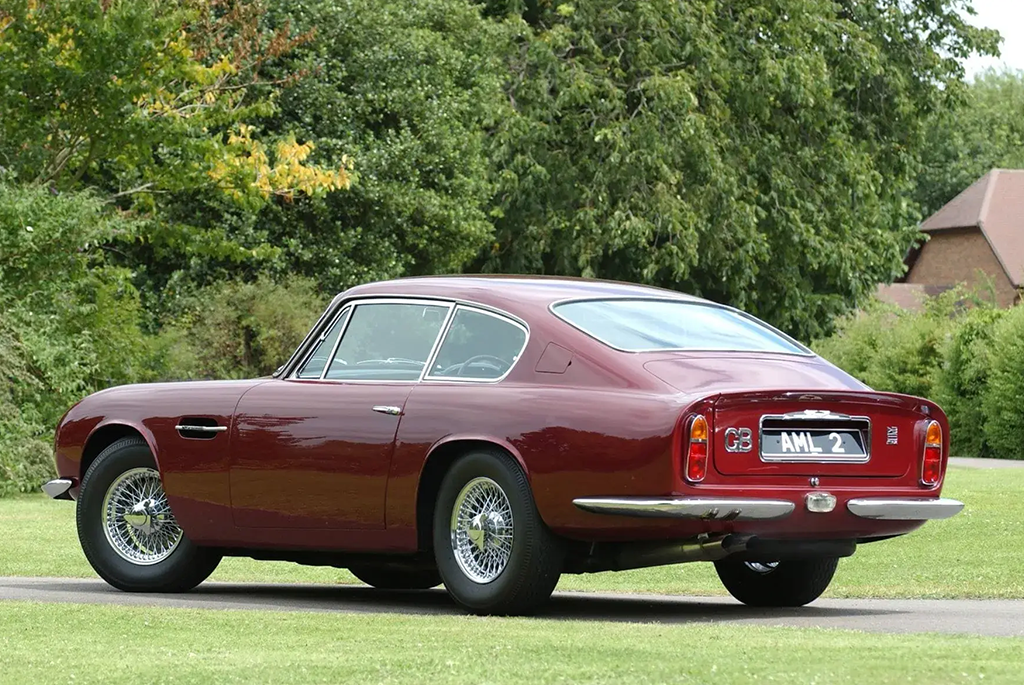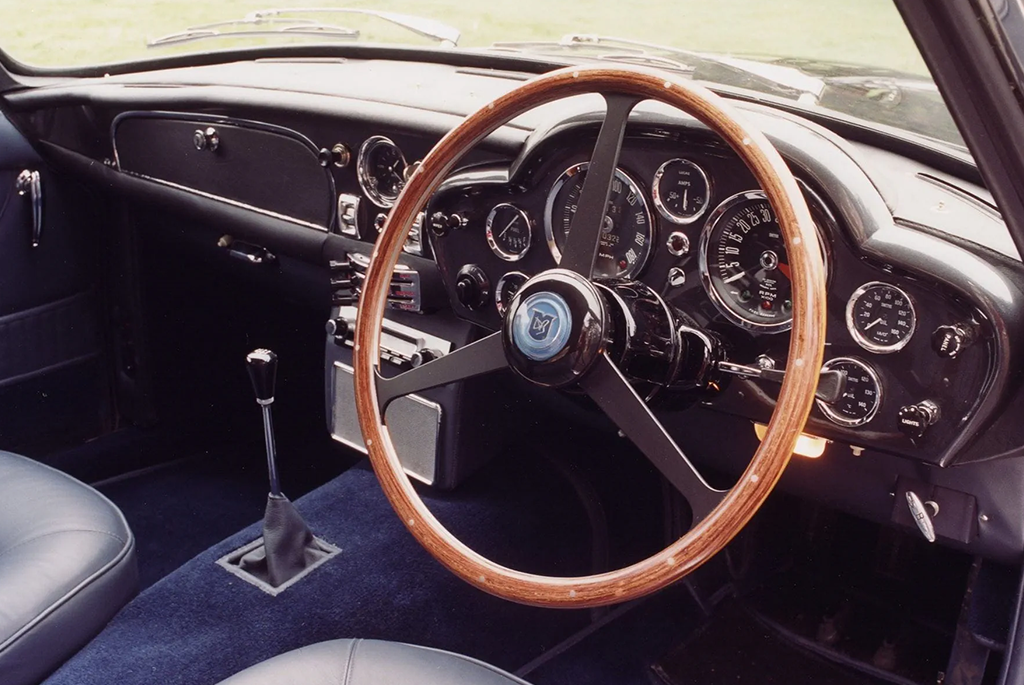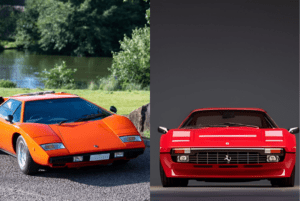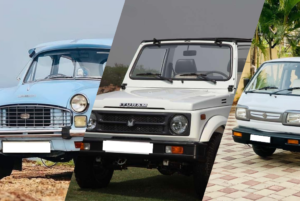
Picture this: the sleek silhouette of the Aston Martin DB6 slicing through the winding roads of the Swiss Alps, with James Bond at the wheel, effortlessly navigating hairpin turns as he eludes nefarious villains. The DB6, with its perfect blend of power, style, and cutting-edge technology, became the perfect automotive companion for the charismatic secret agent, leaving an indelible mark on both cinematic history and the automotive world.
As we delve into the captivating story of the Aston Martin DB6, we unravel the symbiotic relationship it shares with the world of espionage, where luxury meets intrigue, and classic design meets cutting-edge innovation.
In the world of luxury automobiles, few names evoke the same level of sophistication and allure as Aston Martin. The Aston Martin DB6 stands as the epitome of the old-school Astons—an unapologetically rough-riding, sports-oriented machine masquerading as a 2+2, boasting a spirited competition engine. Before it, we had the esteemed DB4 and DB5; after, the larger, more comfortable yet muscular DBS and V8.
During its heyday, the DB6 emerged as a more practical version of the DB5. It stretched eight inches longer, granting a relatively usable rear seat and a sizable trunk, sporting a spoiler and kamm tail reminiscent of the 250 GTO from four years prior.
Equipped with a “standard” 282-horsepower, 4.0-liter DOHC inline-six and a somewhat cumbersome four-speed manual, it was no slouch. But opting for the “Vantage specification” meant camshafts with a more aggressive profile, upgraded Weber carbs, and a ZF five-speed transmission—pushing power to a hefty 325 horses at 5,750 rpm and transforming a quick car into a bona fide speedster.
Yet, these classics were never within everyone’s reach. Back in the day, a DB6 Vantage in 1966 commanded a lofty price tag of $15,400 in the U.S. For context, a 911S was a mere $8,500, and a Corvette came at a fraction, priced at $5,750. The DB6 found itself competing more closely in cost with a V12 Ferrari of that era—a curious twist.
It’s intriguing how history weaves the story of these iconic automobiles, isn’t it?
Behind the wheel of the Aston Martin DB6, it’s everything you’d dream of a vintage grand tourer to be. The seat sits low, granting a sporty view over the long, sweeping bonnet. Grab the mammoth wooden steering wheel; it’s a chunky relic, but as you maneuver through bends, spinning it hand over hand, the whole setup just clicks into place.
But oh, the thrill lies in coaxing precision from its engine and weight. A gentle tap of the brakes, a shift of weight, a delicate nudge of the nose, and you’re clipping apexes with finesse. Then, floor it, let the straight-six’s growl fill your senses till your hair stands on end—pure automotive symphony.
Driving it at high speeds unveils a unique trait absent in modern cars—an entire body that lifts on its springs, riding about three inches higher than its normal height due to aerodynamic lift.
This phenomenon is particularly experienced at speeds approaching 130mph down the Goodwood Motor Circuit’s Lavant straight. The DB4 or DB5’s aerodynamic lift adds a captivating dimension to the driving experience, demanding caution when maneuvering into turns.
In the mid-1960s, Aston Martin recognized the limitations of the DB5, James Bond’s favored company car, and sought to address them in the DB6. The DB5 suffered from aerodynamic lift, cramped rear seats, a sweltering cabin in summer, and cumbersome steering in urban environments. The result was the Aston Martin DB6, a thorough refinement over its predecessor.
Design And Innovation

Instead of adopting the Touring of Milan’s proposal, Aston Martin chose an in-house design with a Kamm tail, a crucial feature contributing to enhanced performance and stability. The Kamm tail, a design inspired by Wunibald Kamm, kicked up on the edge of the boot lid to separate the airflow more cleanly from the body at speed.
Despite a slightly higher roofline, the DB6 proved to be faster and more stable than the DB5, allowing for sustained high speeds. The incorporation of a Kamm tail necessitated additional oil cooling, leading to the distinctive large lower grille on the DB6.
Contrary to popular belief, the DB6 was only marginally larger than the DB5, with a modest 18lb weight difference. The Superleggera construction at the rear was replaced with folded sheet steel, resulting in increased chassis strength.
The DB5’s suspension design persisted, complemented by adjusted rear spring rates and standard Armstrong Selectaride dampers.
Power And Performance
Under the hood, the DB6 retained the unchanged four-liter engine from the DB5, while Vantage models offered high compression ratios. The DB6’s superior performance, including a top speed of 147.6mph, garnered praise and showcased advancements over its predecessor.
Despite a weight gain of about 50kg, the DBS had a true De Dion rear axle, which improved road holding, and the cabin was a proper four-seater. If the first DB4 made previous Astons look and feel very vintage, the DBS did the same to the DB6.
Interior And Comfort

The DB6’s interior reflected a commitment to both elegance and comfort. Plain center panels on the seats replaced the pleated centers on previous models, and the door trims were revised, each having an integral ashtray. The plain roof lining lacked the recesses of the DB5, since as the car was no longer produced with Superleggera principles they were no longer needed.
Influential Legacy
The DB series, spanning from DB4 to DB6, wielded significant influence not only among fans of Commander Bond but also in broader automotive circles. Alongside the iconic Mini, the DB6 became emblematic of the 1960s era.
Renowned figures like Paul McCartney, Mick Jagger, Twiggy, and Peter Sellers counted themselves among the proud owners of the DB6. Jagger’s escapade, crashing his midnight-blue DB6 on London’s Titchfield Street in August 1966, created a legendary rock-star incident.
Accompanied by his girlfriend at the time, model Chrissie Shrimpton (Jean’s sister), Jagger collided with a Ford Anglia driven by the Countess of Carlisle.
Also Read: Jaguar E-Type – The Icon Rises
The list of illustrious DB6 owners extended to Twiggy, Peter Sellers, and the most distinguished of them all, HRH King George. Prince Charles, as the Prince of Wales, was bestowed a blue DB6 Volante by Queen Elizabeth II. His ownership persisted, with the vehicle undergoing a unique conversion to run on waste wine and cheese whey.
As the 1960s came to an end, the DB6 gracefully bowed out, marking the end of an era. While the decade is often associated with a haze of memories, the DB6 now stands as a symbol of a properly configured four-seat GT, shedding the unfair criticisms it endured in its time. Today, it garners appreciation for what it truly represents, no longer merely embodying the sentiment of the Rolling Stones’ song, “You Can’t Always Get What You Want.”


